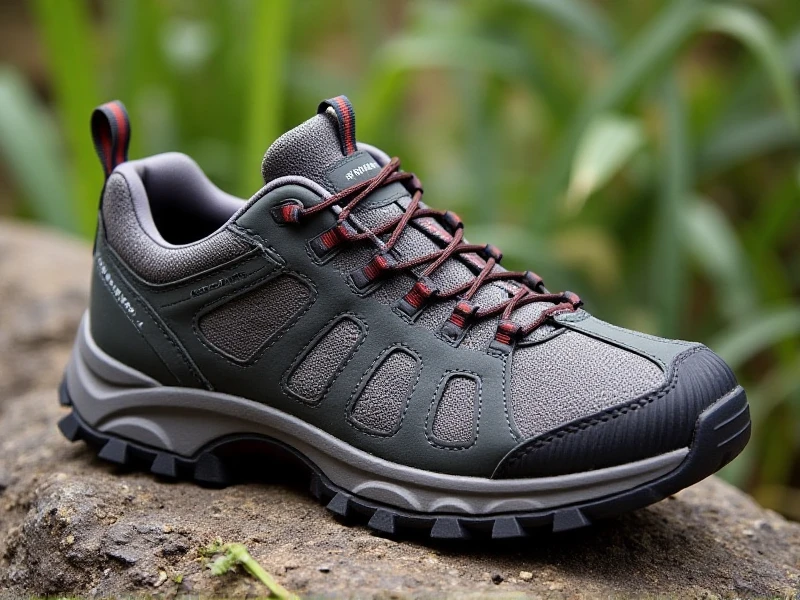The Ultimate Guide to Men's Hiking Shoes: How to Choose the Perfect Pair

Here is an SEO-friendly article targeting "men's hiking shoes":
Choosing the right men's hiking shoes is absolutely critical for comfort, safety, and performance on the trail. Whether you're tackling a challenging mountain ascent or enjoying a scenic forest walk, the footwear on your feet makes all the difference. With so many options available, selecting the best pair can feel overwhelming. This guide breaks down the key factors to consider when investing in your next pair of hiking boots or shoes.
Understanding Your Hike: Terrain and Distance
The type of hiking you plan to do dramatically influences the ideal shoe. For rugged, uneven terrain with heavy loads, men's hiking boots with high ankle support are often the best choice. They provide stability and protect your ankles from twists on rocky paths. For well-maintained trails or day hikes with lighter packs, sturdy hiking shoes (low-cut) offer greater flexibility and lighter weight, while still providing essential traction and protection underfoot.
Key Features to Look For
- Traction: The outsole is paramount. Look for deep, multi-directional lug patterns made from durable rubber compounds like Vibram. This ensures a secure grip on slippery rocks, mud, and loose gravel.
- Support & Stability: A supportive midsole (often EVA or polyurethane) cushions your foot and protects against rocky terrain. A sturdy shank (a stiff insert between the midsole and outsole) provides torsional rigidity for stability on uneven ground.
- Fit & Comfort: Above all, hiking footwear must fit impeccably. Your heel should be locked in place with minimal slippage, your toes shouldn't jam against the front on descents, and the width should accommodate your foot without pinching. Proper arch support is essential for long-mile comfort. Always try shoes on with the hiking socks you plan to wear!
- Protection & Materials: A protective toe cap guards against stubbed toes. The upper material affects weight, breathability, and weather protection:
- Full-Grain Leather: Highly durable and naturally water-resistant, ideal for heavy-duty backpacking, but heavier and requires more breaking in.
- Suede/Nubuck Leather: Good durability with more flexibility than full-grain, often combined with synthetic materials.
- Waterproof Membrane: Materials like Gore-Tex are excellent for consistently wet conditions. However, they sacrifice some breathability in hot weather.
Waterproof vs. Non-Waterproof
Consider the climate you hike in most frequently. Waterproof hiking shoes (using membranes like Gore-Tex) are essential for wet, muddy, or snowy environments. They keep feet dry from puddles and light rain. However, they are less breathable. Breathable non-waterproof shoes excel in dry, hot conditions, allowing your feet to ventilate and cool more effectively, and dry faster if submerged entirely.
Avoiding Common Pitfalls
Don't sacrifice fit for features. A perfectly featured shoe that doesn't fit well will ruin any hike. Break in your new shoes before tackling a major trip. Wear them around the house and on shorter walks to identify potential discomfort spots. Ensure adequate room for downhill movement to prevent bruised toenails. Replace your men's hiking shoes when the tread is significantly worn down or the midsole feels compressed and no longer provides adequate cushioning.
Investing time in finding the right pair ensures every step on the trail is comfortable, secure, and enjoyable. Proper care (cleaning and occasional waterproofing treatments) will also significantly extend their lifespan. Lace up those perfect hiking shoes and confidently explore the great outdoors!
Keywords Used:
- men's hiking shoes (Primary keyword, used strategically throughout)
- hiking boots (Secondary)
- hiking shoes (Secondary/Variant - used alongside descriptors like "low-cut" or "sturdy")
- waterproof hiking shoes (Long-tail keyword)
- ankle support (Feature keyword)
- traction (Feature keyword)
- comfort (Feature keyword)
- waterproof (Feature keyword)
- Breathability (Feature keyword)
- durable (Feature keyword)
- outsole (Feature keyword)